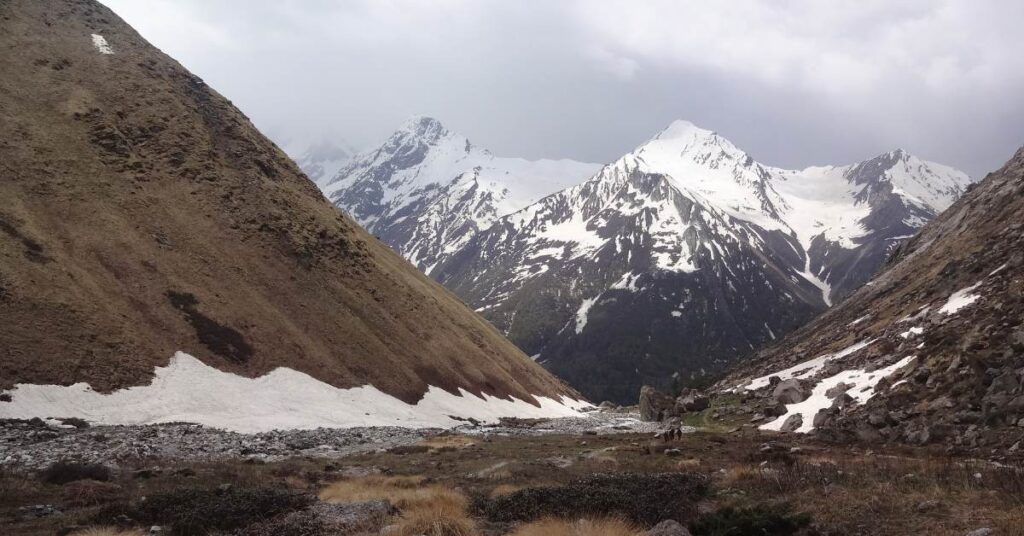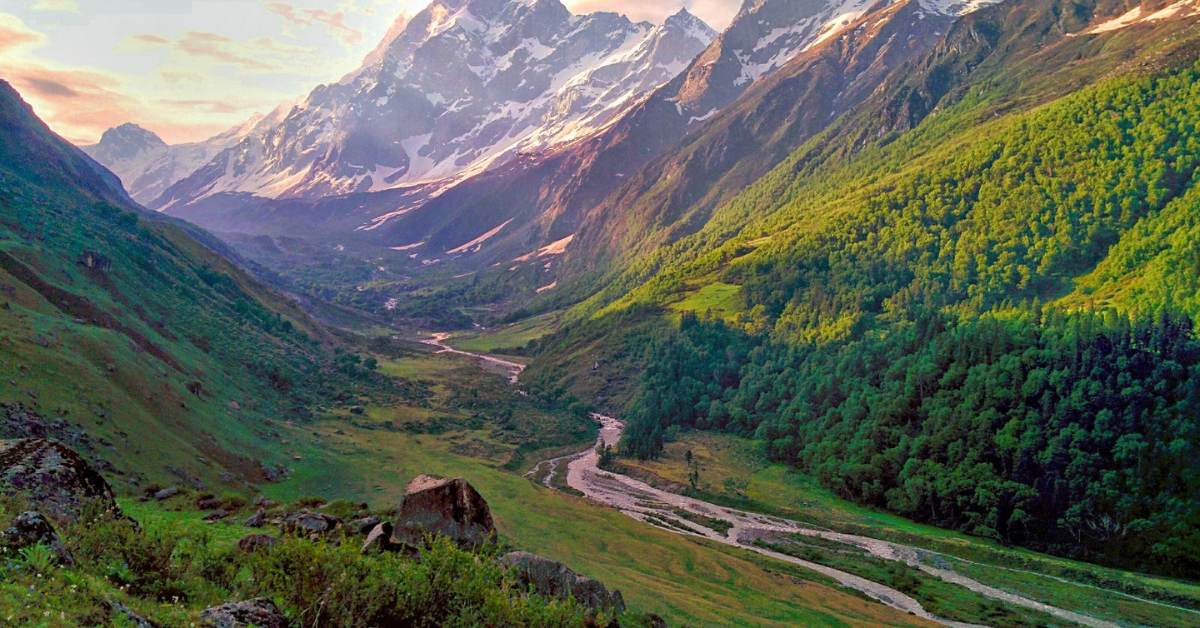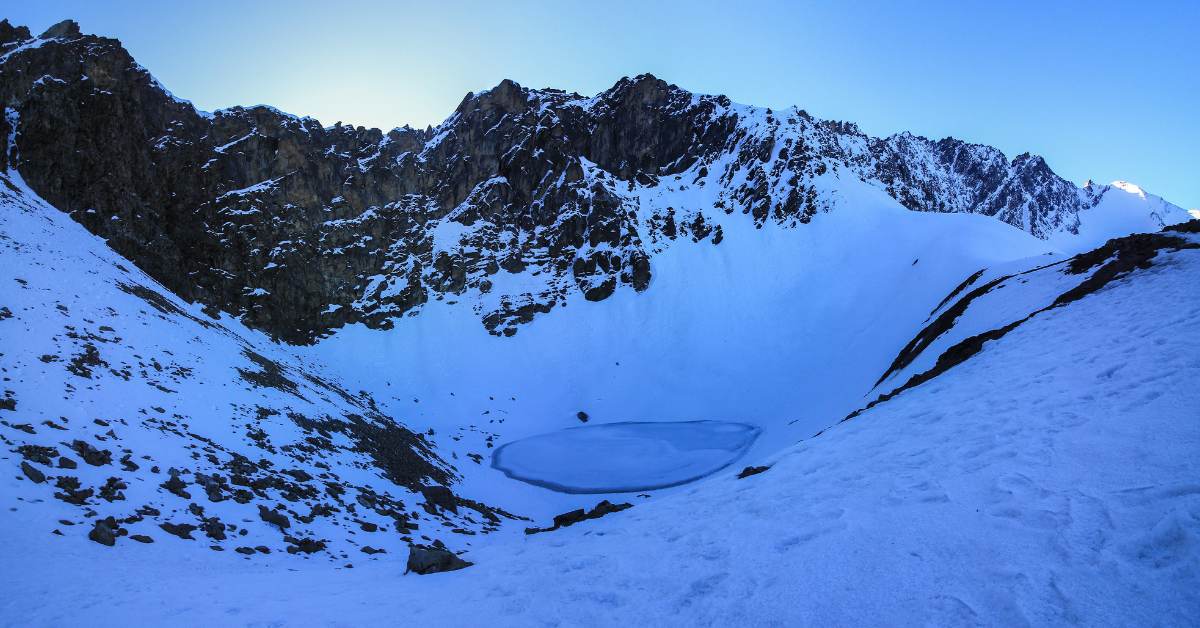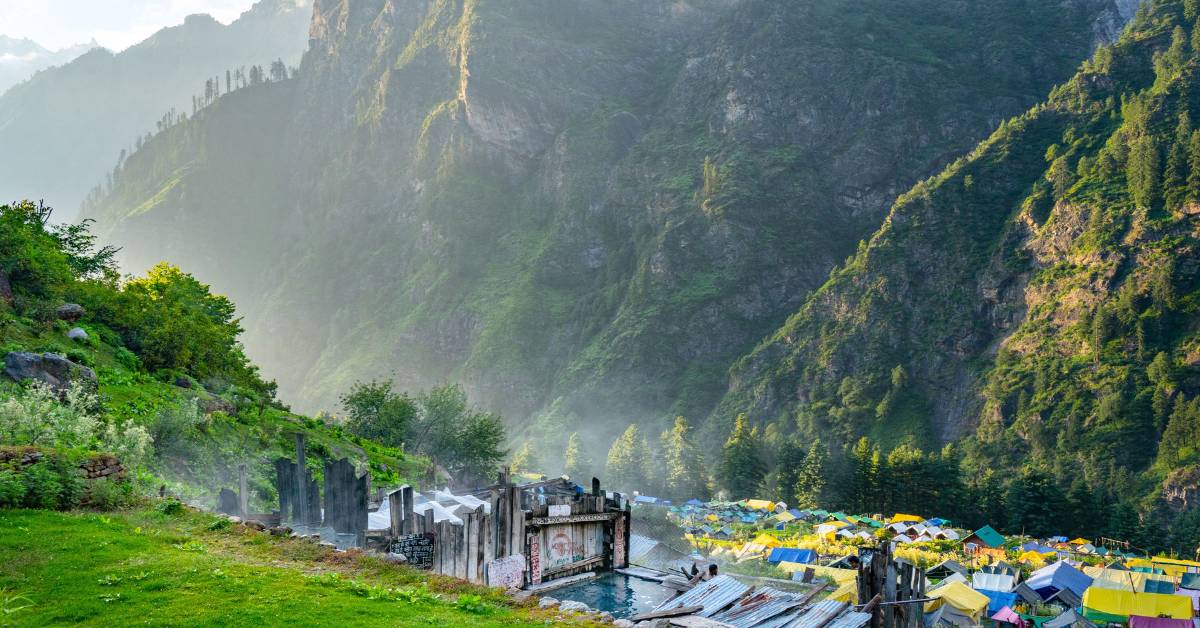Welcome to Trip Trek Tales, we are your personalized travel guides. Trip Trek Tales is a one stop travel information platform that strive hard to provide the best travel guides to all are readers. Today we will tell you about Har Ki Dun Trek. One of the most beautiful and scenic Himalayan treks.
Har Ki Dun trek is a scenic adventure that takes trekkers through the beautiful Govind National Park. This park is famous for its wildflowers, especially orchids, and this is one of the reasons why many people prefer spending their time here. For nature enthusiasts, adventure lovers, and photographers; it is a dream come true. With fantastic views of snow-covered peaks and glaciers in the Banderpoonch Range surrounded by ancient Himalayan villages, the Har ki dun trek presents a rare opportunity to explore such kind lifestyles. The itinerary to cover the Har Ki Dun trek, the distance covered in each day’s walk of the trek, and weather conditions during different times are among others contained in this comprehensive guide.
Overview of Har Ki Dun Trek
The Har Ki Dun trek also known as ‘Valley of Gods’ lies in Uttarkashi District of Uttarakhand State in India. It stands at an elevation of about 11,800 feet within the confines of the majestic Swargarohini range peaks. Depending on the season chosen for undertaking it, this trail can be accessed both during summer and winter giving one entirely different experience from their first visit. It passes through old villages, alpine meadows, thick Pine forests, and along crystal clear Tons River; thus presenting various landscapes and cultural aspects along its track.
History and Mythology
Indian mythology and history have a distinguished place in the Har Ki Dun Valley. The valley is also believed to have been passed by the Mahabharata’s Pandavas on their way to heaven. Har Ki Dun means “Valley of Gods” in translation indicating its mythological significance. This pristine landscape was introduced to many by Jack Gibson at the Doon School in the late 1940s and it became popular with trekkers.
Har Ki Dun Trek Itinerary

Day 1: Dehradun to Sankri (200 km drive, 8-9 hours)
The journey towards Har ki dun begins at Dehradun, Uttarakhand’s capital city. A scenic drive from here will take you to Sankri which is a quaint village nestled amidst Uttarkashi district. The drive takes you through picturesque landscapes of Yamuna and Tons rivers valleys, Nainbagh, Nowgaon, Purola, Jarmola, Mori, and Netwar some of the peaceful villages that are passed along this route. Upon arrival at Sankri during the evening hours, one shall check in the hotel for an overnight stay.
Day 2: Sankri to Pauni Garaat via Taluka (Trek Distance: 10 km, 5-6 hours)
After breakfast, we drive a little way to Taluka which is the start point of the trek. From Taluka, the trail follows Tons River and meanders through verdant forests giving you a chance to view wildlife. By late afternoon, you will have reached at Pauni Garaat camping site after a scenic hike. The evening is pleasant because it’s spent amidst nature and stars while having a relaxing dinner.
Day 3: Pauni Garaat to Kalkatiyadhar (Trek Distance: 8 km, 5-6 hours)
The trek continues from Pauni Garaat to Kalkatiyadhar, climbing through dense jungles and along mountain streams. This path is scattered with wildflowers of various colors and has stunning views of surrounding peaks. Once you reach the campsite at Kalkatiyadhar mountains, feel free to relax here for some time. At nightfall, supper will be served followed by an outdoor stay under the stars.
Day 4: Kalkatiyadhar to Har Ki Dun and Back (Exploration Day, Trek Distance: 10 km)
This day is fully dedicated to exploring the Har Ki Dun valley. The distance of trekking from Kalkatiyadhar to Har Ki Dun is relatively short but offers magnificent vistas of the Swargarohini peaks and Jaundhar glacier. It is very verdant with lots of trees and bushes which makes it a great place for going on long walks or taking pictures. You return to the campsite at Kalkatiyadhar after a day of exploration for dinner and rest.
Day 5: Kalkatiyadhar to Pauni Garaat via Osla (Trek Distance: 8 km)
The descent starts as you trek back from Kalkatiyadhar to Pauni Garaat going through Osla village. This ancient village is known for its unique architectural style as well as its temple built in honor of Duryodhana who was a character in the Mahabharata. The path gives amazing views over the valley and neighboring mountains. After reaching Pauni Garaat, spend your evening peacefully by the riverside.
Day 6: Pauni Garaat to Sankri via Taluka (Trek Distance: 10 km)
The trek starts from Pauni Garaat to drive back to Taluka for the trekking cycle, where it descends along the Tons River. The path is quite easy and allows soaking in the beauty of the landscape. After reaching Taluka, a driver takes you to Sankri, where you can rest in a local hotel and enjoy a final dinner in the mountains.
Day 7: Sankri to Dehradun (190 km drive, 7-8 hours)
The journey ends with an enjoyable drive back to Dehradun. As you say goodbye to the mountains; memories of enchanting landscapes will stay with you forever as well as the cultural richness of this region’s villages and friendly people who made your acquaintance.
Har Ki Dun Trek Distance and Difficulty
The total Har Ki Dun trek distance is about 47 kilometers. This climb is tagged as moderate so that both beginners and experienced trekkers will find it convenient for their fitness levels. The trail includes gradual inclines and declines interspersed with some steep sections needing good physical health. This track is well maintained and marked throughout; has a few camping sites along its way which have been put up for overnight stopovers or provide basic amenities needed while traveling by foot such as water sources etc.
Har Ki Dun Temperature and Weather
Har Ki Dun Temperature and Weather Overview
- Summer (April to June):
- Temperature ranges from 10°C to 25°C.
- Ideal for trekking on warm and sunny days.
- Nights can be cool, requiring warm clothing.
- Monsoon (July to September):
- Heavy rainfall occurs, making the trails slippery and challenging.
- The landscape is lush and green, with abundant wildflowers.
- Winter (October to March):
- Temperature ranges from -5°C to 15°C.
- The valley is covered in snow, creating a winter wonderland.
- Trekking during this time requires proper gear and experience in snowy conditions.
- Cold weather with clear skies provides stunning views of the snow-capped peaks.
Best Time to Visit Har Ki Dun Trek
The best time to trek Har Ki Dun is from April through June or September until November as these months have moderate climatic conditions with clear skies. The summer season favors those who prefer hotter weather and also more green landscapes while autumn presents an opportunity for one to see the valley in golden view.
There are also winter treks, which are famous for those who wish to experience snowy landscapes and trekking in colder conditions. Nevertheless, it is necessary to be prepared adequately with appropriate clothing and gear for wintertime climate and snow.
Flora and Fauna in Har Ki Dun
The Har Ki Dun valley has a large number of plant and animal species making it a paradise for nature enthusiasts. This area features different types of wildflowers such as orchids, primulas, marigolds, etc. that bloom lavishly during the summer season. The thick forests consist mainly of pine, oak, and deodar trees that have made them habitation zones for various birds and wildlife.
In addition to bird watching there are several other animals you can spot around this place like the Western Tragopan, Himalayan Monal, etc. It is not only home to some mammals such as Bharal (blue sheep), Musk deer, Snow leopard, and Himalayan black bear but also plays a vital role in safeguarding this biodiversity due to its location within Govind National Park where the trek passes through.
Cultural Experience of Har Ki Dun Trek
The Har Ki Dun trek is one thing that makes it unique among others, you will come across the culture and lifestyle of the remote Himalayan villages. The trek goes through several ancient villages such as Gangad, Seema, and Osla where you can have a chance to mix with the locals and know their normal ways of life. Villagers are warm and hospitable; they share their cultures, foods, and handicrafts.
Especially notable in Osla is its temple dedicated to Duryodhana who was an antagonist in Mahabharata. Built over 5000 years ago, this temple exemplifies traditional wooden architecture with intricately carved wooden chambers. Villagers in Osla and its environs have retained their unique culture and tradition which gives us a glimpse into a way of life that has remained unchanged for centuries.
Tips for the Har Ki Dun Trek
- Get Physically Prepared: Although the trek falls in the moderate category, good physical condition is extremely important. Regular exercises involving cardiovascular exercises, strength training, and endurance exercises will help prepare your body for this trekking activity.
- Pack Wisely: To ensure that you are all set for the hike, make sure you carry all the necessary gear and clothing. The items include solid backpacks, comfortable boots for trekking, warm clothes, a rain jacket, and a personal first aid kit. It is also advisable to bring along walking sticks, water bottles, and some quick snacks.
- Stay Hydrated: While on the trek, it’s important that you remain hydrated especially when climbing higher altitudes. Carry a bottle of water or hydration bag with you and ingest water regularly to avoid dehydration.
- Respect the Environment: Har Ki Dun is an untouched area hence respecting both its environment as well as its culture becomes fundamental. Avoid littering around, stick to specific paths while being alert about Indigenous customs and beliefs
- Travel in Groups: For strangers who have never been there before it is always wise to move in groups or with a local guide; this guarantees safety and opportunities to learn information about the historical backgrounds of the area including cultural traditions as well as natural features.
- Be Prepared for Weather Changes: The weather conditions in these mountains can change rapidly so one has to be prepared for every kind of weather pattern. Carry extra clothing layers, rainwear, and sunblock, and be able to accustom yourself to various types of weather changes.
Read More: Kheerganga Trek Complete Guide
Final Words
Har Ki Dun trek takes tourists deep into the interiors of the Himalayas, where they experience a beautiful blend of natural beauty, cultural richness, and adventure. The path gives both experienced hikers and novices an unforgettable trip because it contains a variety of terrains, colorful plants and animals, and friendly local people. Being well-prepared for the hike as well as considering the environment inside this geographical location will certainly make Har Ki Dun Trek an unforgettable experience that keeps on nurturing memories about the Valley of Gods.



